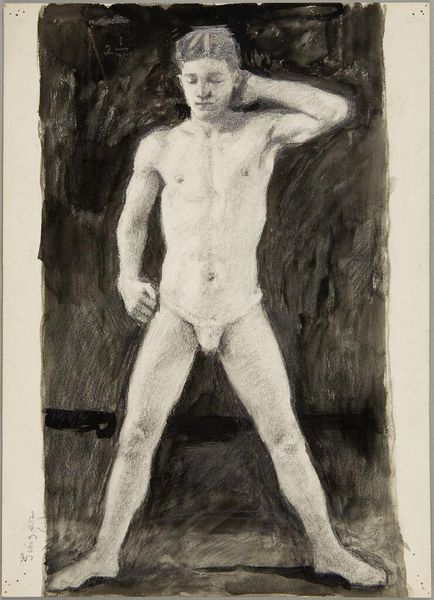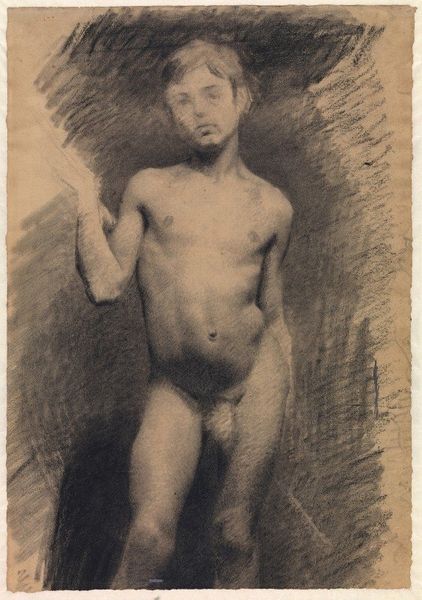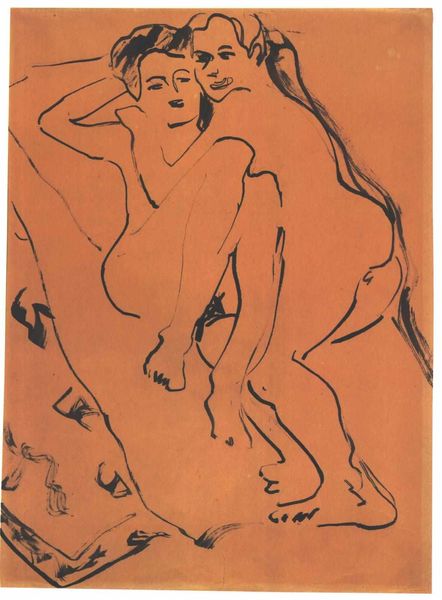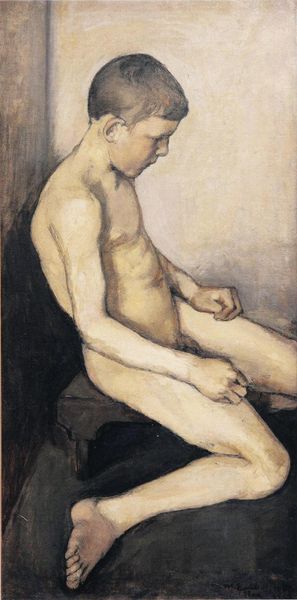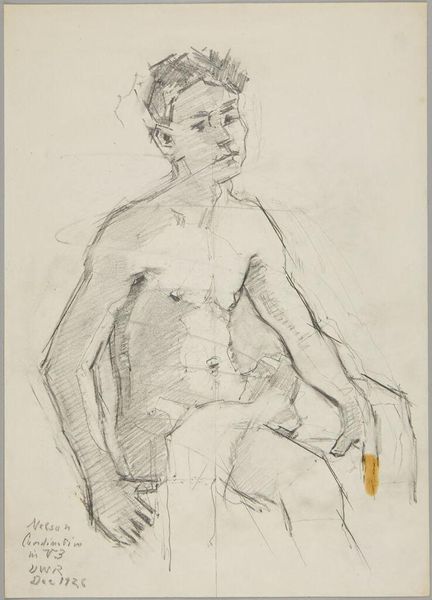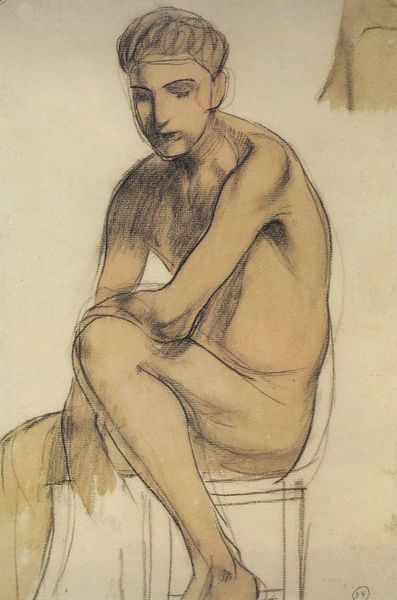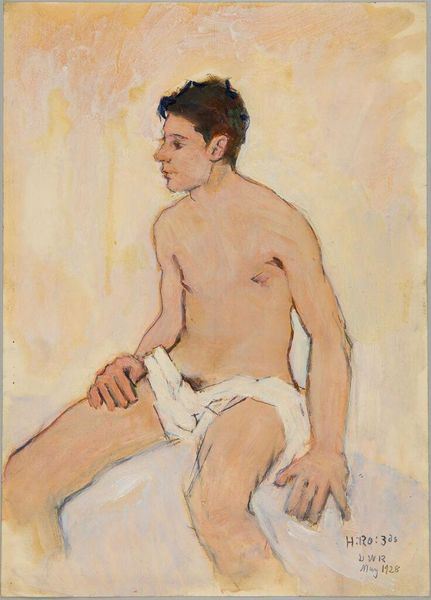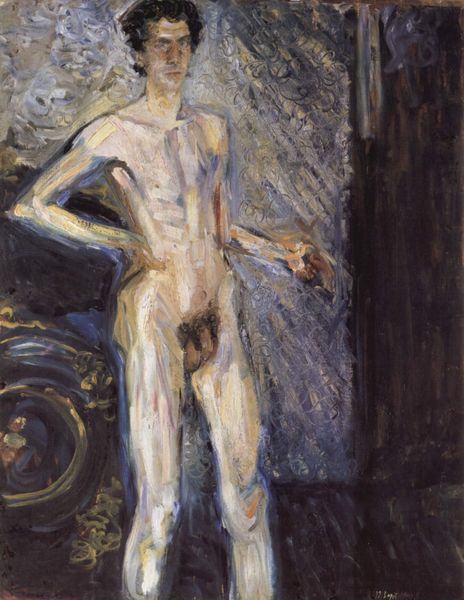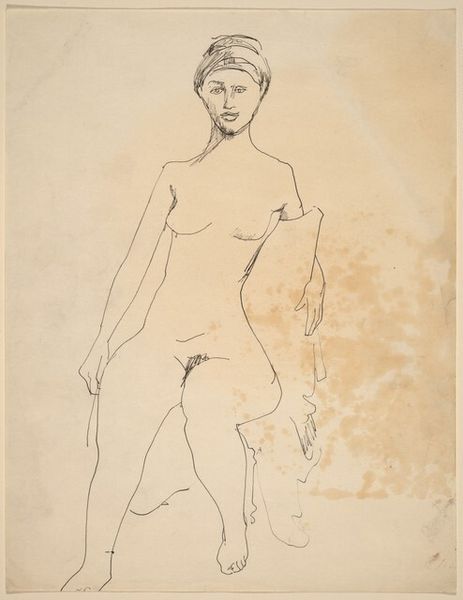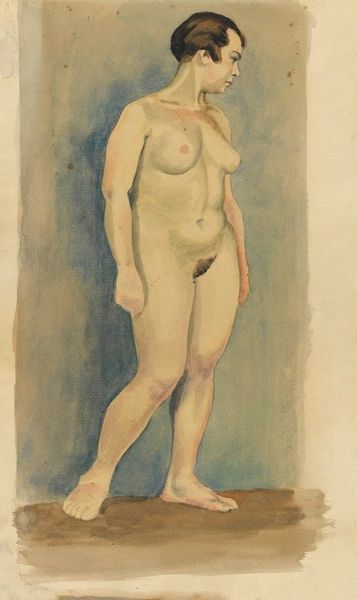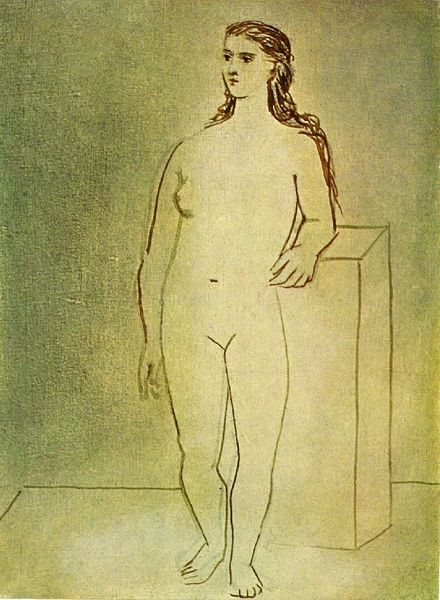
painting, oil-paint
#
portrait
#
painting
#
oil-paint
#
figuration
#
expressionism
#
academic-art
#
nude
#
male-nude
Dimensions: 68 x 52 cm
Copyright: Public domain US
Editor: Okay, so this is Picasso's "Nude Youth" from 1906, an oil on canvas. It's surprisingly…rough. Almost unfinished, but the texture of the paint and the sketch-like quality gives it a raw, immediate feel. How should we interpret it? Curator: Focusing on materiality, notice the canvas itself. It's not primed to perfection, allowing the paint to interact directly, creating these earthy tones. Look at the pigments - ochres and browns. These weren’t randomly chosen; they’re commercially available earth pigments. Picasso is consciously choosing these accessible materials. Why do you think that is? Editor: Maybe to democratize the process? Like making it more about skill and less about fancy supplies? Curator: Precisely. Also consider, he's painting a "nude," a subject historically associated with academic art and often the patronage of wealthy individuals. But the way he uses materials is, dare I say, proletarian. What statement might Picasso be making about the role of art and artist? Editor: He's using humble materials to elevate an everyday subject, a nude yes, but also a normal-looking young man rather than a mythological figure. This elevates the mundane through the *process* of painting itself. Curator: Exactly! The brushstrokes are visible, the layering is evident – it's less about illusion and more about the act of creating an image. He lays bare the labour involved. How does that connect to the art market, perhaps? Editor: By revealing the "work," he perhaps diminishes the aura of untouchable genius, reminding us of the physical effort of making art. Curator: Precisely! And perhaps questions the value system inherent in a market that fetishizes the finished product. Editor: That’s fascinating. I'd never considered Picasso's material choices as a deliberate challenge to the established art world. Curator: Understanding the "how" – the materials, the processes, the labor – brings us closer to the "why" of art. This is more than just a nude study, it is a statement using humble art-making process.
Comments
No comments
Be the first to comment and join the conversation on the ultimate creative platform.
